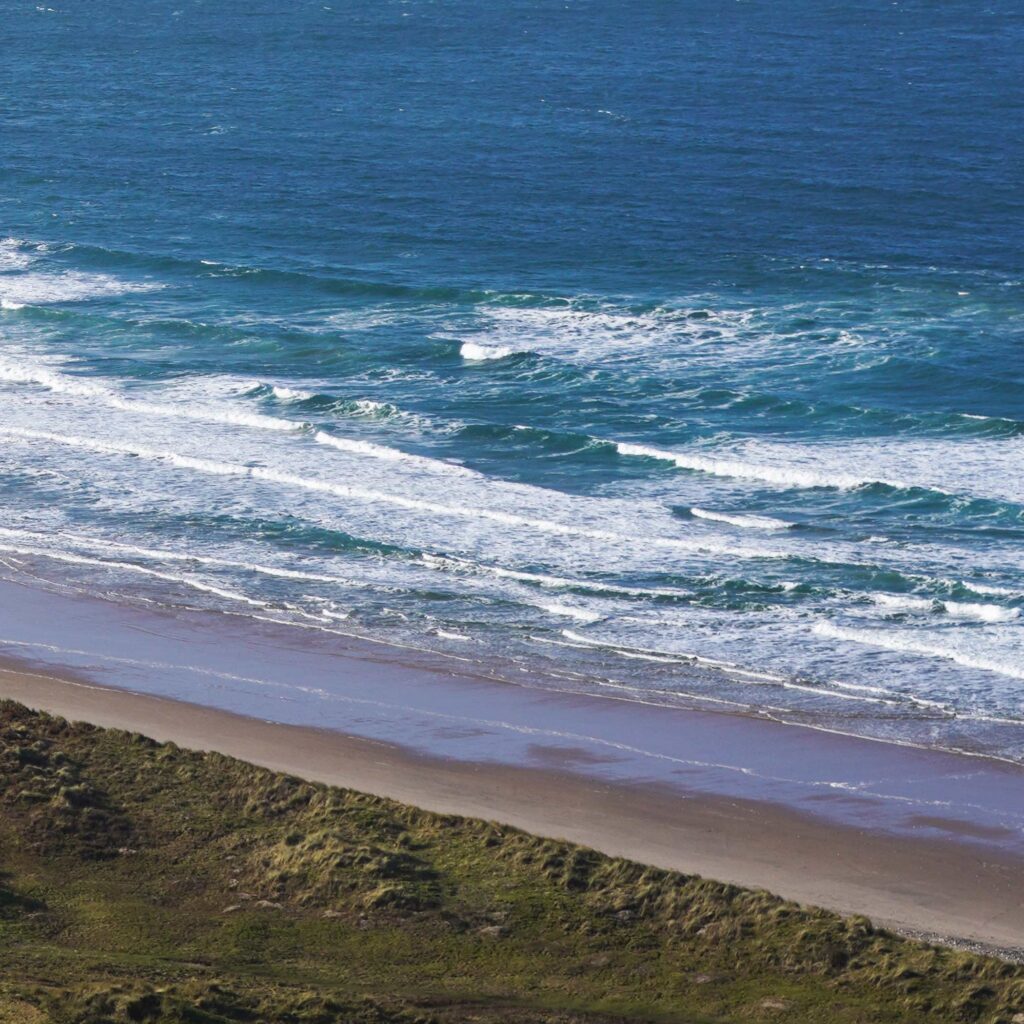RIP CURRENTS
Rip currents are one of the greatest and most common hazard on the North Coast beaches. The RNLI lifeguards perform countless rescues each and every year assisting swimmers and bodyboarders who have been caught in rips. Knowing what a rip is, how to spot one and how to avoid one is key to staying safe at the beach.
WHAT IS A RIP?
When waves and wind push inland, water levels along the shore rise, causing excess water to flow along the beach (feeder current) until it finds an escape route running perpendicular to the beach usually via a deep channel, break in the reef or between sand bars (neck). At this point the water flows at its fastest through narrow gaps back to sea, causing a dangerous rip current. Once it flows outward beyond the breaking waves it disperses sideways and the rip loses power (head).

DANGEROUS BEACHES
Runkerry Beach and White Park Bay have some of the strongest rip currents on the North Coast, neither location is patrolled by lifeguards. Make sure you know your limits if you enter the water. Look at the beach safety guides and learn the risks!
HOW TO SPOT A RIP CURRENT
- Deeper and/or darker water
- An obvious gap between breaking waves
- Sandy coloured water extending beyond the surf zone
- Debris or seaweed
- Significant water movement

